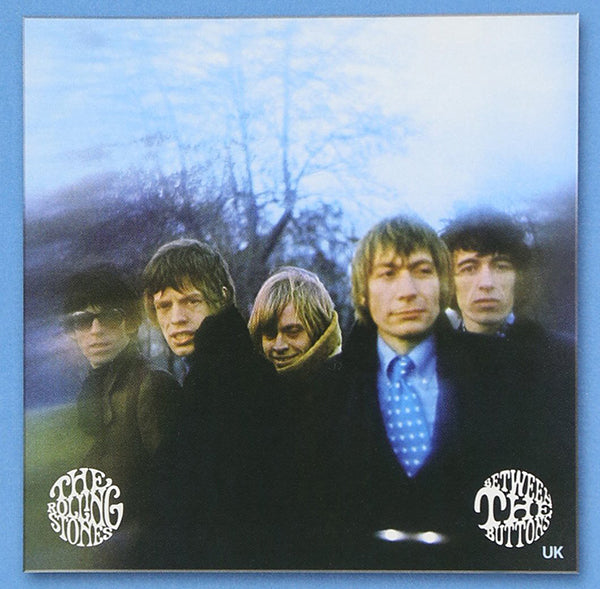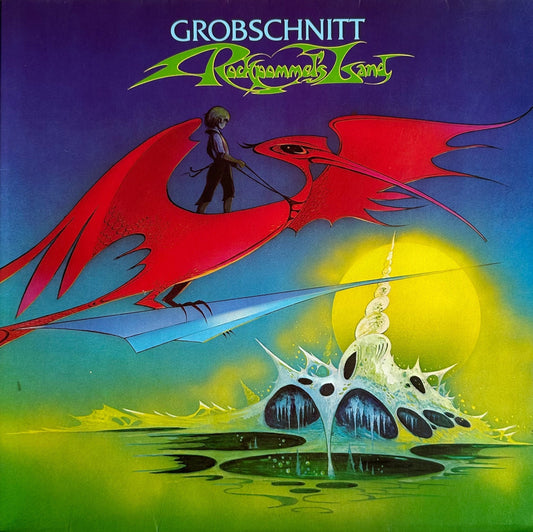England swings like a pendulum do
Bobbies on bicycles two by two
“England Swings,” Roger Miller, 1965
There was a time when if you asked me to name my favorite Rolling Stones album and I was feeling slightly contrarian, I'd say, Between the Buttons. Many people I've mentioned this to also agree, especially if you leave out, for a moment, the four-album streak (Beggar's Banquet, Let It Bleed, Sticky Fingers, Exile on Main Street) that defined the Stones, that defined their greatness.
Early rock critic Paul Williams engaged with the album in the early Crawdaddy magazine, when I was in high school, and I admired the robust respect with which he led you through his thinking. Because it was a really different kind of Rolling Stones album, one whose British version, the one we are discussing here, had no hits. Copper readers might be interested in the odd audio version on which I based this essay. It was provided by the enigmatic "Prof. Stoned: Rare & Deleted" [https://www.profstoned.com/] who is out there somewhere, providing excellent quality mono recordings reproduced for the internet.
Between the Buttons was both the fifth and the seventh album by the Rolling Stones. No sleight of hand here; it was just that even in early 1967, British and American divisions of the same record companies did business differently.

The Rolling Stones, 1964. Courtesy of Wikimedia Commons/Hugo van Gelderen/Anefo.
Both adhered to the 12 song, six tracks to a side LP format. But in England, singles remained their own distinctive revenue stream. In England, "Ruby Tuesday" and "Let's Spend the Night Together" was a standalone two-sided hit on one 45 rpm disc. The Between the Buttons album had neither song in the UK. Yet it was a fine early example of album as artistic statement, with thematically related songs. It was about the Stones' tumultuous, shifting status among the swinging world of ruling class peers, artists and art dealers, fashion designers and their models, druggies and their dealers, rare book sellers and antiques dealers, poets and photographers, boldface names known from New York to London to Paris to Rome to Monte Carlo. The Stones were part of the mix; they were not its rulers.
The Stones' US label, London Records (the stateside, rock-pop division of British Decca), liked the idea of having hits on albums: Why else would you make them? It was a big country, America. Bigger profits, too, on albums.
The US labels liked to keep product in the pipeline. Rather than expand Between the Buttons’ American release to 14 tracks, they removed two songs to make room for "Ruby Tuesday" and "Let's Spend the Night Together." The latter is the song Ed Sullivan demanded the Stones perform as "Let's Spend Some Time Together" when they appeared on his universally-watched Sunday night variety show on CBS. (The businessman in Mick Jagger was in conflict with the rebel Mick, as he sang "some time together" the first reference, but squeezed in "the night together" on a subsequent line.) By this time, in early 1967, Sullivan probably needed the Stones more than they needed him, but Jagger wasn't entirely sure…hence the compromise. He could always tell Sullivan he slipped.
Between the Buttons (BTB), the first of three atypical Rolling Stones albums in 1967, is a bit of slang meaning "undecided." The way the story goes, drummer Charlie Watts asked manager/producer Andrew Loog Oldham what the title of the new album was going to be; when Oldham said "it's between the buttons," meaning he didn't know, Watts took it as the title, and it stuck.
The second Stones album of 1967 was Flowers, a collection of those tracks that didn't make it to American releases of Aftermath or BTB. It included "Have You Seen Your Mother, Baby (Standing in the Shadows)," "Mother's Little Helper," and "Lady Jane." The two songs that got kicked off the US BTB are both excellent: "Back Street Girl" is a modest, reflective ballad that Jagger sings with sincerity and vulnerability. The instrumentation of much of the album has the counterintuitive texture of the rest of BTB UK: not just piano, which dominates (played by Jack Nietzsche, Ian Stewart, and Nicky Hopkins), but bucolic sounds of harpsichord, dulcimer, recorder and flute.
The second song that went from UK BTB to US Flowers is "Please Go Home," a kind of sequel, more in-your-face, to whoever didn't get the message of "Get Off of My Cloud." This Bo Diddley-influenced rocker is all the better for going off the rails in terms of production values, or coherence. (BTB is Loog Oldham's final album as Stones' producer and manager.) It sounds mixed in a cocktail shaker and poured with an unsteady hand; it sounds like the New York Dolls. Flowers came out the end of June, 1967, and some mistook this mélange of tracks as a tepid answer to Sgt. Pepper’s Lonely Hearts Club Band; in fact, it totally ignores Peppe’sr. Later in 1967, the Stones' would file their answer with Their Satanic Majesties Request, an interesting, underappreciated approximation of the psychedelic moment, appealing in its way, and as always: The songs have sturdy bones and can't be dismissed as a trip gone wrong, but an experiment worth shaking out of their heads.
The big influence on Between the Buttons is Bob Dylan. The difference is that the Stones are restrained by the three-minutes or under time limit demanded by the suits at British Decca. "She Smiled Sweetly" clearly would like to have been "Sad-Eyed Lady of the Lowlands," but it's squeezed into a two-and-a-half-minute track. "Who's Been Sleeping Here" sounds as if it would like to be resting somewhere on "Blonde on Blonde." Images: "The noseless old newsboy, the old British brigadier." The source material is a little simpler and older than Dylan: It's really a rewrite of "Goldilocks and the Three Bears" (Goldilocks herself is name-checked), with a veneer of jealousy.
The sound of the record, mostly absent high-impact guitar riffs, is given its hardness in the syllables Jagger sings. The three most noteworthy songs consist of titles conveying their crispness by the hard letter "C": "Connection"; "Complicated"; "Cool, Calm and Collected." (No Oxford comma. Hmmm.)
"Connection" is a rocker with terse, uncluttered, lyrics. "Complicated," as well as "My Obsession," are carried by Watts' drums isolated for a few bars that act as bridges or choruses: verse, verse, bam bam; verse, verse, bam bam. "Cool, Calm, and Collected" seems a bittersweet takedown of an American socialite ("dressed all in red, white, and blue/and she always knows more than you do.") But the lyrics show a kind of admiration at the skillfulness of this beautiful mover and shaker:
She seems to glow brilliantly white
And her hair seems to shine in the night
With her feet unbelievably light
And her teeth ready, sharpened to bite
These songs took me back to Keith Richards’ outstanding autobiography, Life with James Fox. Being a teenager in America hearing this album, feeling unable to compete with or attract the attention of the cheerleaders at our own Riverdale High, this sense of the Stones feeling one-upped by all these society girls seemed illogical: Didn't the Rolling Stones always get and keep the girl? What's all this jealousy, polite anger, and heartbreak? (The previous album, Aftermath, was thick with this resentment: "Stupid Girl" and all that.)
But the Rolling Stones hardly stopped working for a day in those years, recording and touring. And their young women were rather independent too. It didn't matter if you were in a band; if you were gone for three months at a time, Richards writes, no young woman was going to wait for you. Hearts really got broken. I mean, Keith came back from a tour to find his girlfriend so strung out on drugs that he ratted her out to her parents. Imagine drugging so much you scared Keith! And Keith was right to do it: her father, a presumably well-to-do Londoner, went and found her, brought her home, and seized her passport. She straightened out and had a good life.
"Miss Amanda Jones" is a socialite given a name, in a Chuck Berry rocker worthy of the Stones' best early guitar rock efforts. I don't know why this wasn't a single in the US, or anywhere, as far as I know. Perhaps because the idea that this debutante "looks quite delightfully stoned," diminished airplay opportunities.
The closing song, "Something Happened to Me Yesterday" meshes Dylan enigma with British vaudeville/music hall tradition. Tough to pull off, but the Stones do it well with a light comic touch.
Brian Jones looms large on the Stones of this moment, and not in a good way. Richards writes nothing about Between the Buttons except to refer to "Yesterday's Papers" (originally considered for Aftermath), a savvy dissection of the short media half-life of a supermodel.
But during this period he does talk about the deterioration of Jones' relationship to Mick and Keith, as the bonds hardened with the songwriting duo, leaving the perpetually stoned ("Tuinals, Seconals") Jones as unable to do his job in the studio or onstage. The cover photo says it all: When those of us newly experimenting with these things saw the swollen slit-eyes of Brian Jones in the group shot (Vaseline on the lens to get that "look"), I'm surprised more of us weren't scared sober: Any way you looked at it, whether this is your Brian on drugs, or this is your brain on drugs, it didn't look pretty.
This article originally appeared in Critical Conditions, the Substack blog of Wayne Robins, and appears here by permission.



